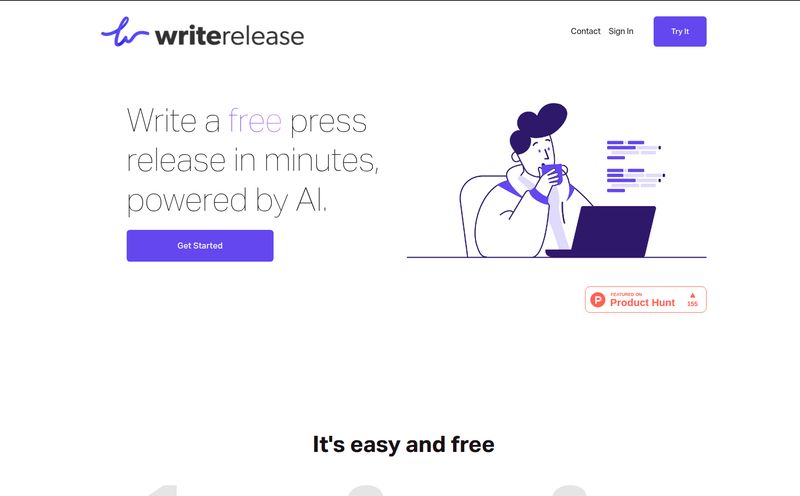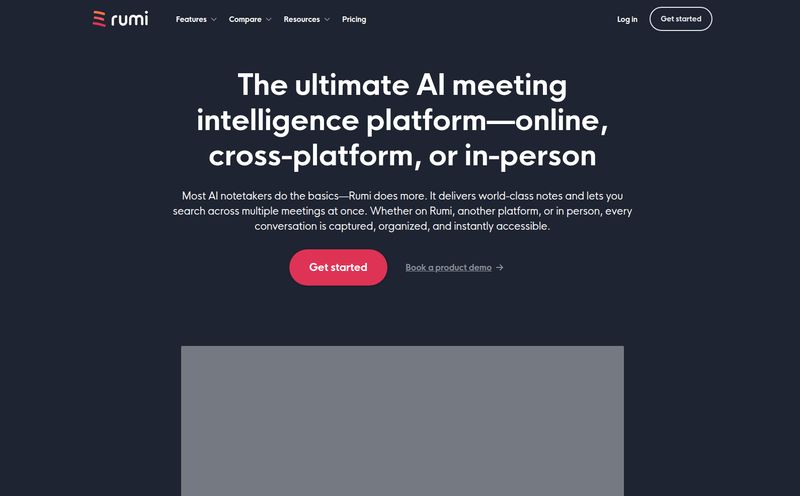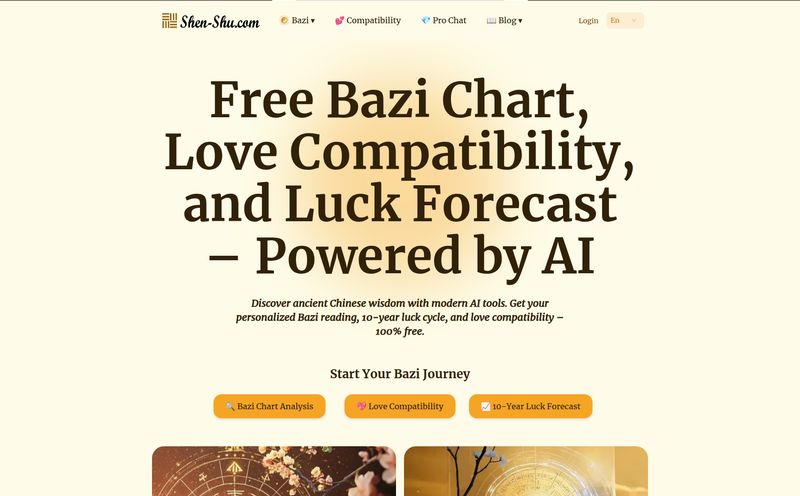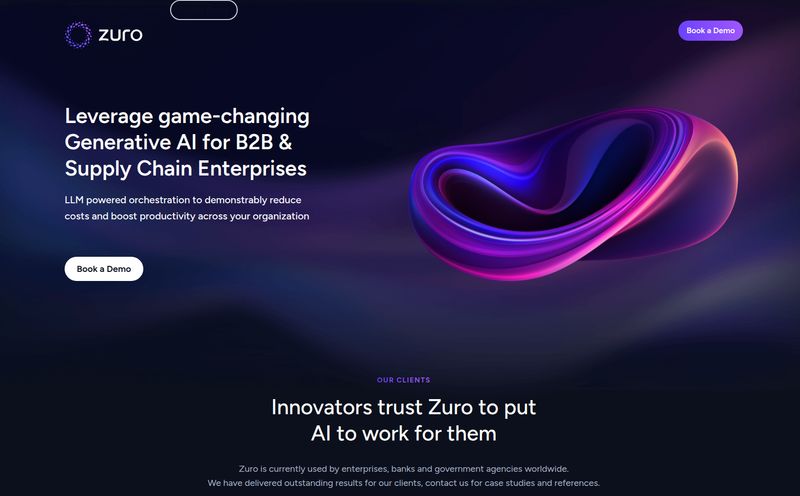We've all been there. You're in a Google Meet call, presenting your heart out. You’ve poured hours into this presentation, you think your points are brilliant, but all you see on the other side is a grid of silent, staring faces. Are they captivated? Confused? Are they secretly watching cat videos on another screen? Who knows. It’s like trying to read a room with the lights off.
For years, we've just accepted this as the awkward reality of remote work. We've lost that subtle, human feedback loop of nods, frowns, and slight shifts in posture that tell us how we’re really doing. But what if you could get some of that back? I recently stumbled upon a Chrome extension called EmotionSense Pro, and honestly, my initial reaction was a mix of intense curiosity and a healthy dose of tech-skepticism.
An AI that reads emotions... in real-time... during my calls? Part of me was intrigued, the other part was picturing a dystopian future where my boss gets a notification every time I roll my eyes. So, I did what any good SEO and tech nerd would do: I installed it and took it for a spin.
So, What Exactly is EmotionSense Pro?
In a nutshell, EmotionSense Pro is a Chrome extension that bolts onto your Google Meet. It uses your computer's camera to analyze facial expressions and vocal tones from the meeting participants (including you) to provide real-time feedback on their emotional and cognitive states. Think of it as a dashboard for human connection.
It tracks over 10 different emotions—like happiness, surprise, frustration—and some really interesting cognitive states, including attentiveness, confusion, and even fatigue. The idea is to give you a more objective sense of how your message is landing, helping you adjust your approach on the fly.

Visit EmotionSense Pro
Why I'm Usually Skeptical of “Emotion AI” (And Why This is Different)
My first question wasn't "Does it work?" it was "Where is my data going?" The thought of a third-party server, somewhere in the cloud, analyzing video feeds from my private meetings is... unsettling. We've seen enough data privacy scandals to be wary of anything that watches or listens. This is usually where I'd uninstall and walk away.
But this is where EmotionSense Pro threw me a curveball.
The Magic is in the Local Processing
Here’s the absolute game-changer: 100% of the processing happens locally on your machine. Let me say that again. No video, audio, or analysis data is ever sent to an external server. It’s not stored, it's not uploaded, it doesn't leave your computer. Full stop. This isn't just a feature; it's the entire foundation of the tool's credibility. It’s designed for privacy from the ground up, which is a breath of fresh air. They even boast SOC 2 compliance, which is an enterprise-grade security standard that's no small feat to achieve.
Suddenly, my privacy concerns just… evaporated. It's like having a brilliant analyst sitting next to you, whispering insights, but who has amnesia the second the meeting ends. This ethical approach made me comfortable enough to actually check out the features.
Key Features That Actually Matter
Okay, so it's private. But is it any good? The feature list is pretty impressive, but a few things really stood out to me as genuinely useful, not just gimmicky.
Real-Time Emotional and Cognitive Feedback
This is the core of the tool. Seeing a live feed that suggests a key stakeholder just shifted from 'Engaged' to 'Confused' right after you explained a complex point is incredibly powerful. It's a direct prompt to pause and ask, "Does that make sense, or should I explain it another way?" It's proactive, not reactive. They even claim it can detect micro-expressions and distinguish a genuine 'Duchenne' smile from a polite, social one. That’s a level of detail that could be hugely insightful in negotiations or user feedback sessions.
Comprehensive Session Reports
After a call, you get a full breakdown. An emotion timeline shows the ebb and flow of the meeting's vibe. You can see, for instance, that engagement dipped around the 15-minute mark but peaked when you started the Q&A. This isn't about calling people out; it's about refining your own performance. Maybe my 15-minute monologues are not as gripping as I think they are. A humbling, but very useful, piece of data.
Who is This Tool Actually For?
While I can see a lot of people getting a kick out of this, I think it’s a potential powerhouse for a few specific roles:
- UX Researchers: Imagine conducting a usability test and getting instant, unfiltered emotional feedback as a user interacts with your prototype. You could pinpoint moments of frustration or delight with incredible precision, even if the user doesn't voice it.
- Sales Teams and Recruiters: Building rapport is everything. This tool could help you gauge if you're connecting with a prospect or a candidate, or if your pitch is causing confusion rather than confidence.
- Educators and Trainers: Are students genuinely grasping a concept, or just nodding along? A quick glance at the cognitive state analysis could tell you if it's time for a quick break or a different teaching tactic.
- Remote Team Leaders: For managers, this is a way to check the pulse of your team's morale and engagement during virtual check-ins, helping you spot potential burnout or disengagement before it becomes a major issue.
Let's Talk About the Price... Or Lack Thereof
So, what does this futuristic, privacy-first AI dashboard cost? This is the other shoe that I was waiting to drop. And when it did, I was shocked.
It's free.
Not "free trial" free. Not "freemium with all the good stuff locked away" free. It’s 100% free, forever, with no credit card required. In a world of endless subscriptions, this is almost unheard of for a tool this sophisticated. This fact alone lowers the barrier to entry to zero. There’s literally no reason not to try it.
The Not-So-Hidden Catches
No tool is perfect, and it would be dishonest to pretend this one is. The limitations are fairly straightforward. First, it's designed for Google Meet, so if your company is a die-hard Zoom or Microsoft Teams shop, you're out of luck for now. Second, it obviously requires camera access and relies on analyzing what it can see. If participants have their cameras off, it can't do its job.
And the biggest caveat, which applies to all emotion AI, is that facial expressions are not a perfect window into the soul. Someone might look frustrated because their dog is barking in the next room, not because they hate your quarterly report. The tool's own ethical guidelines recommend you tell participants you're using it and use the data as a guide, not an absolute truth. It’s a datapoint, not a verdict.
My Final Verdict: Is EmotionSense Pro Worth a Shot?
Absolutely. Yes. Given that its core privacy-first architecture solves the biggest problem with this kind of technology, and the fact that its completely free, there is no downside to giving it a try.
It's not a magic mind-reading machine, but it doesn't pretend to be. It’s a smart, well-designed tool that provides an extra layer of insight that has been sorely missing from our digital interactions. It's like upgrading from standard definition to HD for your emotional intelligence. It won't solve all your communication problems, but it gives you a much better chance of catching misunderstandings and building stronger connections. For anyone who lives in Google Meet, this is one of the most interesting and potentially useful extensions I've seen in a long time.
Frequently Asked Questions
- Is EmotionSense Pro really 100% free?
- Yes, according to their website and the Chrome Web Store page, the tool is 100% free forever, with no hidden costs or credit card requirements. This seems to be their main user acquisition model at the moment.
- Is my meeting data safe and private?
- This is its biggest strength. All of the AI processing happens directly on your computer. No video, audio, or metadata is ever sent to or stored on external servers, ensuring your meeting content remains completely private.
- Does this work with Zoom or Microsoft Teams?
- Currently, no. EmotionSense Pro is specifically designed as a Chrome extension for Google Meet. There's no word yet on support for other platforms.
- Do I have to tell people in the meeting that I'm using it?
- The creators provide ethical guidelines that strongly recommend transparency. Informing participants fosters trust and ensures everyone is comfortable. It's best used as a collaborative tool to improve communication, not a secret surveillance device.
- How accurate is the emotion detection?
- The company's website claims a 99.7% accuracy rate, while the Chrome store mentions 85-92%. This variance is normal. In practice, it's best to view the feedback as a strong indicator or a guide rather than an infallible measurement of someone's internal feelings.
Conclusion
Navigating the nuances of human interaction through a screen is a challenge we've all faced. Tools like EmotionSense Pro represent a fascinating step toward bridging that digital divide. By putting privacy at the forefront and offering its powerful insights for free, it has removed the biggest barriers to adoption. It empowers you to be a more perceptive, empathetic, and effective communicator. If you spend any significant time in Google Meet, do yourself a favor and give it a try. You might be surprised by what you've been missing.
Reference and Sources
- About SOC 2 Compliance - AICPA
- EmotionSense Pro Website (Note: As of this writing, the pricing page returned an error, but the main site confirms the free model)
- How to Combat Zoom Fatigue - Harvard Business Review



